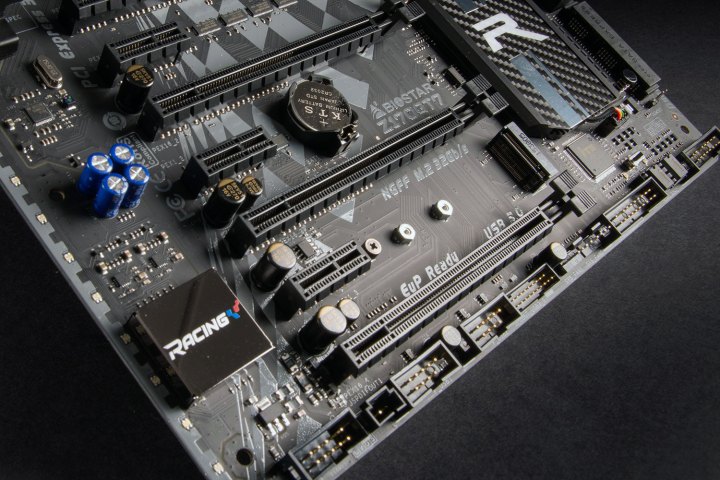
One of the big new features in X570 motherboards designed for AMD’s Ryzen 3000 CPUs, is PCI Express 4.0. But even with its overkill bandwidth, the PCI Special Interest Group (PCI SIG) has already ratified PCI Express 5.0 and has now published early specifications for PCI Express 6.0. It’s not set to be finalized until 2021, with supporting products likely not arriving until a few years after that. What this does show though, is that PCI Express bandwidth is unlikely to ever be problematic again.
Performance on PCI Express slots has been improving by a factor of 100% every few years since the turn of the century, but things stalled with PCI Express 3.0, which was followed by a seven-year gap between the publishing of new specifications and it’s only now, in 2019, that we’re starting to see motherboards and add-in cards that support the new standard. In recent years, the PCI SIG has committed to a far swifter release schedule and has already released the 5.0 specifications. 6.0 now won’t be far behind, it seems.
As with the leap from PCIE 3.0 to 4.0, PCIE 5.0 and 6.0 both double bandwidth for their respective slots. A x16 PCIE 3.0 port offers 16GBps bandwidth, with PCIE 4.0 offering 32GBps, 5.0 64GBps, and 6.0, a staggering 128GBps. This is far in excess of anything that would have a practical use for general PC users at the moment, with even the world’s most powerful graphics cards like the Nvidia RTX 2080 Ti and Titan RTX barely requiring more bandwidth than a PCI Express 2.0 x16 slot. But this does clear the way for any potential slot bottlenecks in the future.
When using PCI Express 3.0 with two high-end graphics cards, there are some performance limitations enforced by motherboards that are only capable of x8/x8 for multi-GPU configurations. That is not a problem with PCI Express 4.0 and certainly wouldn’t be with 5.0 and 6.0, even with optimistic views of the performance of new graphics cards in the years to come.
What such advancements might enable though, are new technologies. Solid-state drives have grown faster and faster in recent years and PCI Express 4.0 SSDs can support up to 5GBps on just a couple of lanes. In theory, we could see even faster drives using even fewer lanes, on future PCI E 5.0 and 6.0 drives. As Anandtech points out, the new signaling technology at play with PCI Express 6.0 does have some advantages of its own, offering improved bandwidth efficiency.
For average hardware buyers, PCI Express 6.0 will most likely remain a marketing number used to hype up future motherboards and CPUs, but there’s always the potential of new, A.I. add-in-cards or some unforeseen technology that could require such impressive bandwidth. For now, it’s just good to see the PCI SIG picking up the pace on its developments.
Editors' Recommendations
- AMD FSR 2.0 takes notes from DLSS — and it’s coming soon
- PCI Express 6.0 claimed to be four times faster than the current version




